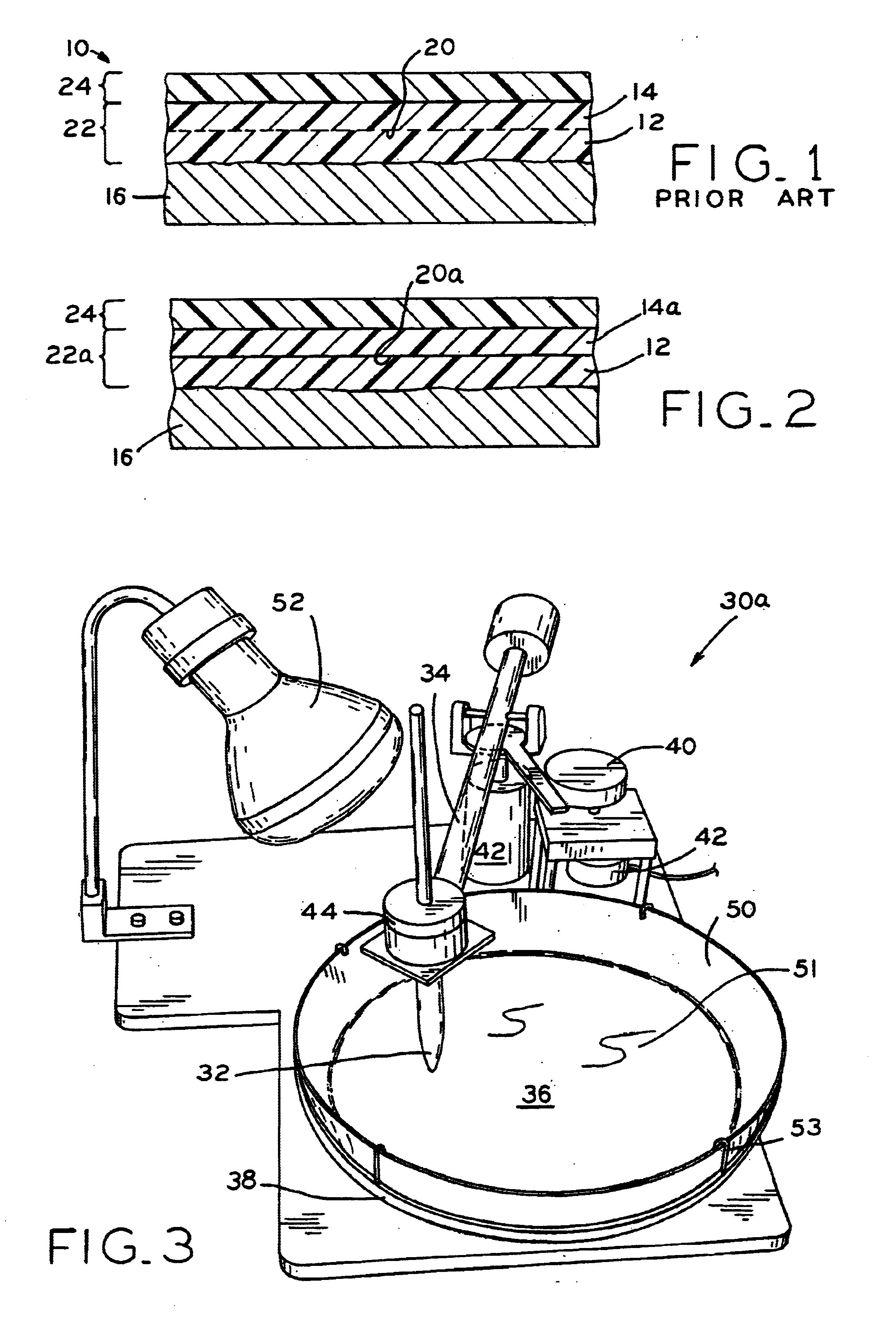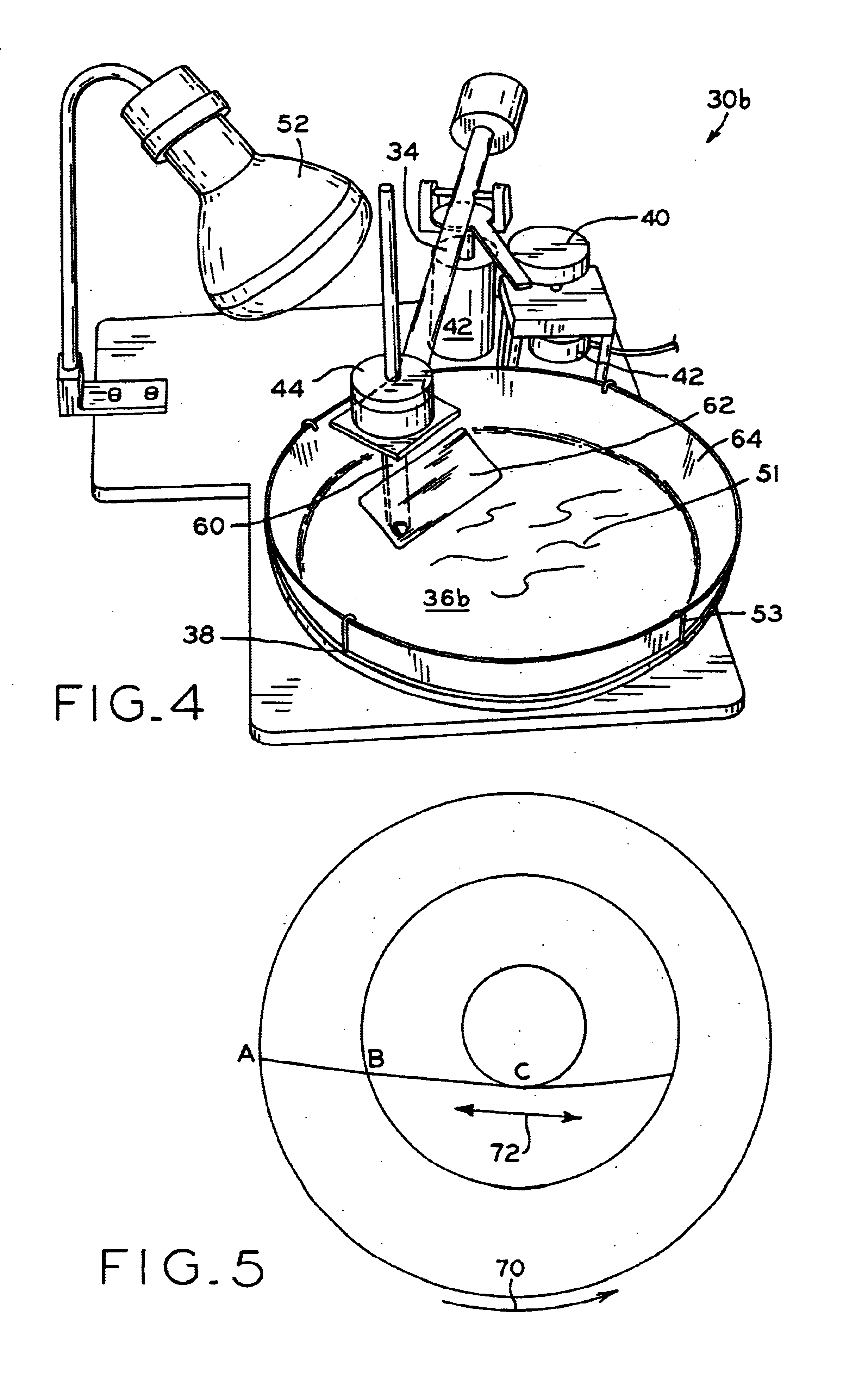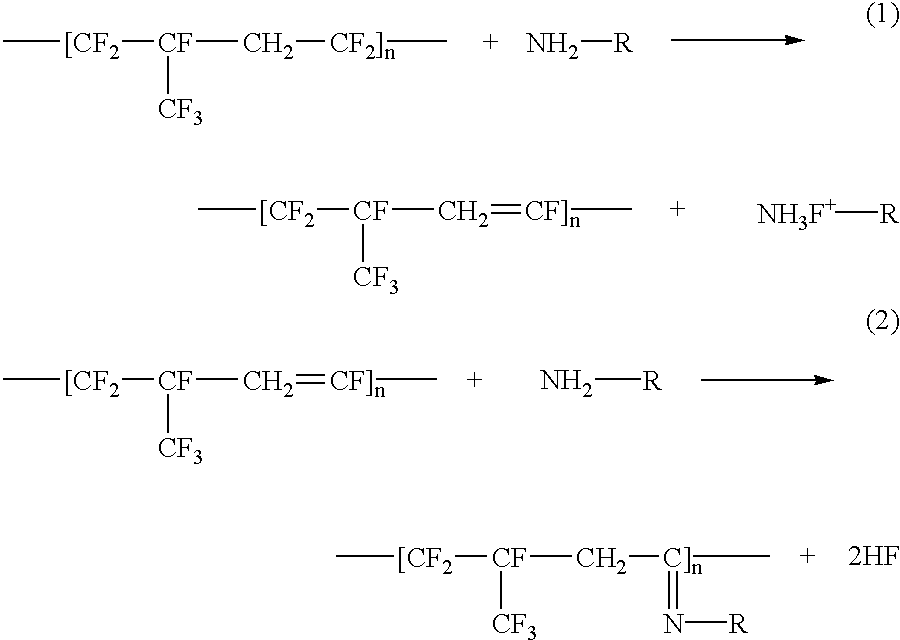Multiple coat non-stick coating system and articles coated with same
a coating system and multi-coating technology, applied in the field of non-stick coating systems, can solve the problems of affecting the adhesion of the substrate, adversely affecting the adhesion of the intercoat with subsequent layers, and reducing the amount of preferred materials, so as to achieve excellent adhesion, excellent intracoat cohesion, excellent adhesion
- Summary
- Abstract
- Description
- Claims
- Application Information
AI Technical Summary
Benefits of technology
Problems solved by technology
Method used
Image
Examples
example 1
Comparison of Damage Resistance Between Coatings Having Varying Proportions of THV and PTFE Fluoropolymer Resins
Mixtures of high temperature resistant organic binders with fluoropolymers and fillers were prepared, with the binders and fluoropolymers present at a fixed ratio with respect to each other. The mixtures were prepared from a base containing an aqueous solution of polyamide imide resin into which had been dispersed by ball milling a polyethersulfone (“PES”) resin, as well as pigments and fillers including finely divided alumina, ultramamine blue and carbon black pigments. To this base was added in varying proportions an aqueous dispersion of PTFE and an aqueous dispersion of THV fluoropolymer terpolymer resin containing reactive vinylidene fluoride monomers. The coatings were formulated in such a way that the total amount of fluoropolymer to other ingredients was held constant while the ratio of one fluoropolymer to the other was varied. The composition of the solid ingredi...
example ii (
Example II(B)
Comparison of Amount of Fluoropolymer Present at the Surface Thereof, Between Coating Compositions Respectively containing FEP and THV Fluoropolymers
In a second experiment, one coated panel was prepared using each of the above coatings in the manner described above in Example II(A). A cyanoacrylate glue was applied between the coated panels. The panels were clamped together for several minutes to cure the glue, and after curing the panels were forced apart. The glue completely released from the coating containing the terpolymer flurorpolymer resins, while glue residue was observed remaining on the surface of the FEP-containing coating. This result indicates that the amount of fluoropolymer at the surface of the terpolymer resin coating was equal to or greater than the amount of fluoropolymer at the surface of the FEP coating and the release properties of the former were superior to the latter.
example iii
Preparation and Physical Testing of Primer Compositions Respectively Containing FEP and THV Fluoropolymers
Primers were prepared using mixing processes typical of coatings manufacturing operations. An aqueous solution of Torlon AI-10, polyamide imide resin, was first prepared by dissolving the resin in a mixture of N-methyl pyrrolidone (“NMP”), furfuryl alcohol, dimethylamine ethanol (“DMAE”), and wetting agents / surfactants in water, in a manner similar to that described in U.S. Pat. No. 4,049,863 to Vassiliou. Fillers were dispersed in this solution, and two portions of the solution were then blended with respective aqueous dispersions of the FEP and THV fluoropolymers. The primer formulations are set forth in Table IV below, which table sets forth the composition of the “wet”. or liquid phase, primer before application of the primer to the substrate followed by curing:
TABLE IVFormulations of primers respectively including THV and FEP.Primer 1Primer 2Binder Resins:Torlon AI-10 Polya...
PUM
| Property | Measurement | Unit |
|---|---|---|
| melting point | aaaaa | aaaaa |
| melting point | aaaaa | aaaaa |
| melting point | aaaaa | aaaaa |
Abstract
Description
Claims
Application Information
 Login to View More
Login to View More - R&D
- Intellectual Property
- Life Sciences
- Materials
- Tech Scout
- Unparalleled Data Quality
- Higher Quality Content
- 60% Fewer Hallucinations
Browse by: Latest US Patents, China's latest patents, Technical Efficacy Thesaurus, Application Domain, Technology Topic, Popular Technical Reports.
© 2025 PatSnap. All rights reserved.Legal|Privacy policy|Modern Slavery Act Transparency Statement|Sitemap|About US| Contact US: help@patsnap.com



